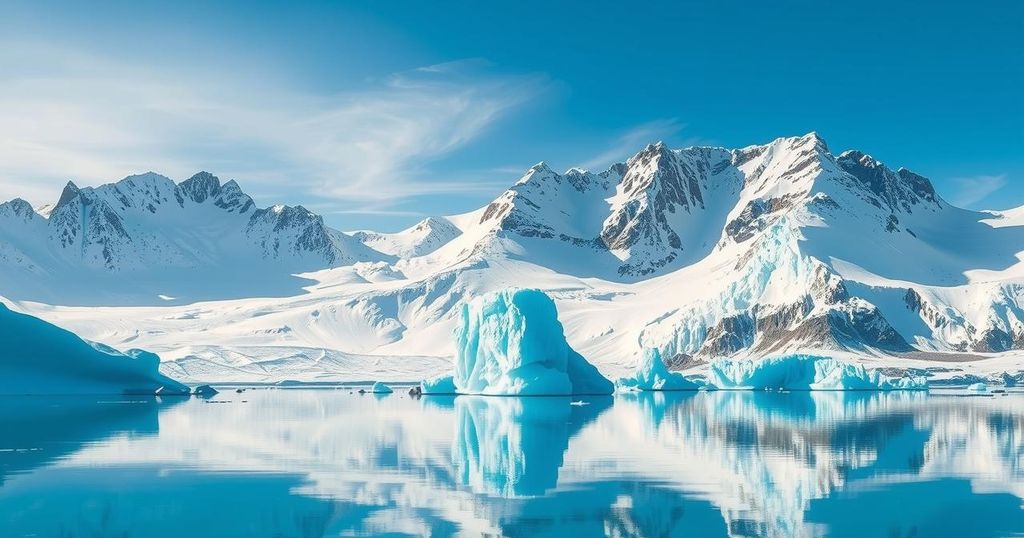Greenland’s Parliamentary Elections: A Pivotal Moment for Independence

Greenland holds early parliamentary elections amid heightened U.S. interest in the Arctic. The elections focus on lawmakers to shape the island’s future, including independence discussions. Voter sentiment largely favors independence as media interest increases. Challenges related to geography and environmental concerns persist as Greenland strives for economic diversification.
On Tuesday, polls opened in Greenland for early parliamentary elections amidst rising global tensions, particularly relating to U.S. interests in the Arctic region. With a population of approximately 56,000, primarily Indigenous Inuit, Greenland’s strategic location and rare earth mineral reserves play a significant role in its importance to global economies. While independence has been a topic since 2009, it is not directly on the ballot this election; voters will instead choose 31 lawmakers tasked with shaping the island’s future, including its potential independence from Denmark.
The atmosphere was celebratory at Nuuk’s sole polling location as election workers welcomed voters. Recent opinion polls suggest a strong inclination among Greenlanders toward independence. Despite a generally favorable view of Americans, indicated by their good relations with the U.S. Pituffik Space Base, there is a prevailing sentiment against becoming part of the United States. Local leaders emphasize that Greenland’s destiny should be determined by its inhabitants, reinforcing the idea that “Greenland is open for business, but not for sale.”
Doris Jensen, representing the Siumut party, highlighted the urgency of the independence issue given the current global climate influenced by Trump’s interest in the island. The unusual media attention has transformed local democratic processes, with coverage from international journalists increasing public awareness. Voter Sofia Rossen voiced a clear message to President Trump, asserting that Greenlanders are capable of determining their own future and preferring to remain independent from both the U.S. and Denmark.
Concerns about growing U.S. interest were shared by Pipaluk Lynge of the ruling Inuit Ataqatigiit party. Many locals are looking towards Europe to establish a stronger geopolitical bond to solidify their sovereignty. Following a recent debate, the Prime Minister faced overwhelming media presence, prompting feelings of anxiety among residents about impending changes.
Campaigns in Greenland featured a different political rhythm, focusing more on community engagement than heated debates. Candidates utilized informal tactics such as setting up tents to serve traditional food in hopes of attracting voters. With geographic constraints causing delays in vote certification, ballots will be transported by various means to the capital. The vast geography entails that voters must navigate a challenging environment.
Amid these complexities, Greenlanders maintain hope that their mineral resources will diversify their economy, which is largely dependent on government jobs. However, environmental protections caution against rapid resource extraction due to potential commercial challenges. Yet, on election day, optimism prevailed as citizens demonstrated their commitment to civic engagement, facing icy roads to participate in this pivotal moment for their future.
In conclusion, Greenland’s early parliamentary elections signify a critical juncture in the territory’s pursuit of independence from Denmark, amid heightened international interest, particularly from the U.S. The populace largely favors self-determination while valuing their rich natural resources. Local leaders advocate for independence, asserting a clear mandate from the people and emphasizing that the future of the island should be decided by its residents alone. As Greenland navigates its complex political landscape, the elections reflect both local sentiment and broader geopolitical considerations.
Original Source: www.pbs.org







